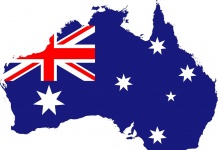 On Publishing Perspectives, Edward Nawotka posts an editorial wondering whether cheap paperbacks still have a place in the market when their prices are undercut by e-books.
On Publishing Perspectives, Edward Nawotka posts an editorial wondering whether cheap paperbacks still have a place in the market when their prices are undercut by e-books.
He mentions a line of extremely inexpensive paperbacks that Penguin has been publishing in Australia at the “low” price of AU$9.95 (or about US$9.05) to celebrate its 75th anniversary. (I guess paperbacks must normally be much more expensive over there, given that’s a couple of dollars more than many regularly-priced ones go for over here.)
Many of these books are available as e-books in the public domain, for free, but Penguin has still managed to sell over 250,000 copies of those paperbacks in the first three months. Of course, anyone who has followed Baen for long is familiar with the idea that free e-books promote sales of printed copies, so that may be what has happened here.
Regardless, it certainly shows that paper books are not out of the sales running yet—even reprints of old ones.































Of course paperbacks aren’t “out of the running.” You actually OWN the print book. You can only ‘lease” the ebook.
Not if it’s a free public domain e-book, like the ones I mentioned in the article.
Paper is on its last legs and I’d think cheap paperbacks even more so. After all, readers who still fear the screen tend to have older eyes and the small print in cheap paperbacks doesn’t appeal.
That isn’t to say that someone can’t still make a few bucks in paper.
As I’ve noted before, I don’t think the leased/owned thing is an issue…although I do have issues with DRM.
Rob Preece
Publisher
I am not sure if someone who willingly pays $9 for a public domain paperback would have enough brain cells to find and use a free e-book.
Makes sense to me. Paper books are much better for rereading and long interval reading as is frequent with standard works. Another feature of paper is that you don’t need to carry it around all the time. Unlike electronic readers that display a variety of titles, the paper book only displays one. In the outback you can leave it under a tarp for a few months and use it where there is no connectivity. The paper book is also a lot easier to navigate as you fan through a complex organization of content or pick out an annotation. It will also cross reference easier if you need to go from book to book or mention a page reference. You also get more legible display with paper regardless of angle and across a wide range of lighting. Finally, paper editions have hyphenation and better typography.
Let’s see, don’t you all think that about 3% penetration of e-readers is not quite enough to do in paper books? There may be a couple of million e-readers out in the wild, but compare that to the billions of people on earth. It is not a drop in a bucket, it is a drop in a thunderstorm.
Some people don’t have or use computers (and other devices that you can read ebooks on). Among those who do, many still prefer to read the physical copy. Even when ebooks are more than the tiny minute proportion of the market that they currently are, some people will still prefer a physical book.
As for the price – yes, Australians are reamed in every direction by pricing. The average new release paperback varies from about $13 to $18. Hardbacks, unless massively discounted, are around $50.
A small portion of this is distance of shipping. Another portion is our good and services tax (+10% on almost everything). Another (currently tiny) portion is the exchange rate.
But mostly it’s because the local distributors can get away with it. When the Australian dollar was pitifully low, Australians grew used to a high price for things. Even though the dollar is no longer so low, we’re still paying ridiculous prices for everything, and the local book industry is incredibly protectionist about “cheap imports”.
It’s not just books either. I rarely buy new video console games here and for pc games I almost always buy them through Steam. Why? Because a new release console game which goes for around &70 in the US (eg. Final Fantasy XIII) is $109 here.
There’s no justification for the price other than that they charge whatever they can get away with.